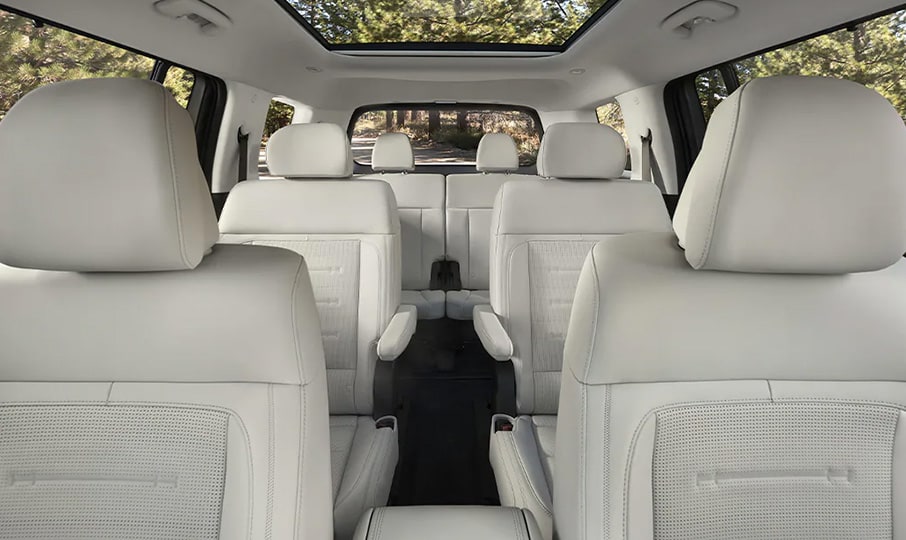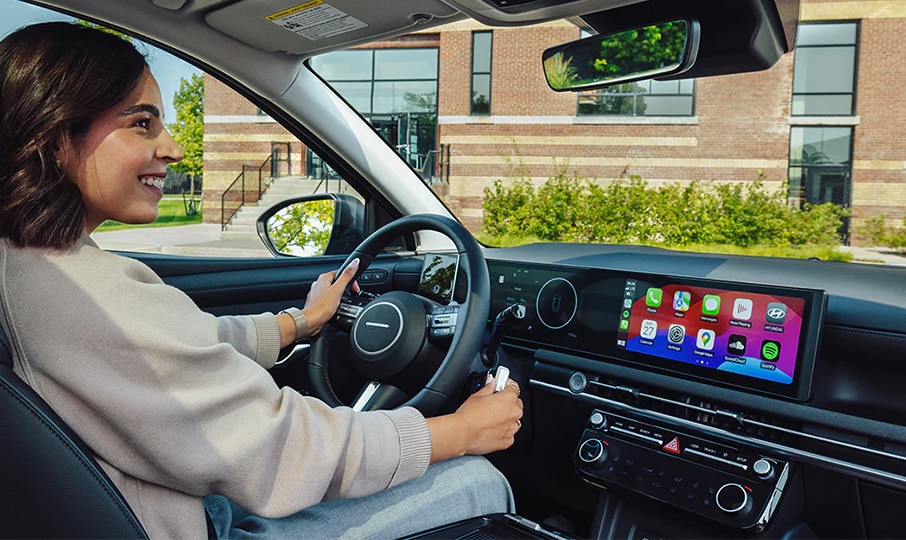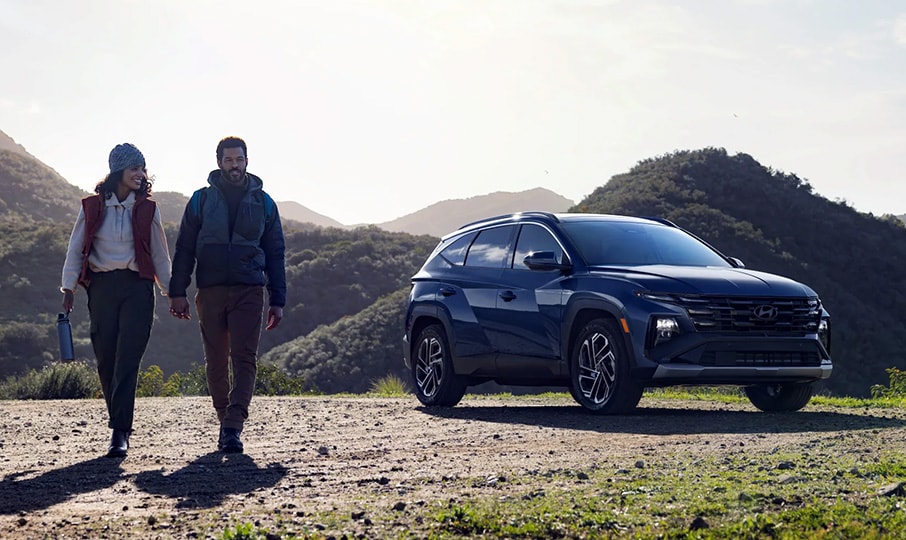Curious about the Hyundai TUCSON and SANTA FE?
Both of these SUVs offer a spacious and comfortable environment for all passengers, impressive power and handling, and Hyundai’s SmartSense safety feature suite. However, since each of these vehicles also has its own advantages, one may be a better fit for your unique lifestyle.
To help you make a decision, we will compare the TUCSON to the SANTA FE below in terms of performance, configurations, cargo space, features, safety ratings, and overall value.
Performance and Driving Dynamics
The TUCSON and SANTA FE both provide a responsive driving experience with powerful engines and all-wheel drive. However, depending on the chosen model and powertrain, drivers will have a slightly different experience.Engines and Powertrains
The TUCSON and SANTA FE come in multiple powertrain configurations, each with their own maximum horsepower.
The TUCSON comes in gasoline, hybrid, and plug-in hybrid configurations. The standard gasoline TUCSON can produce up to 187 horsepower, while the hybrid TUCSON has a maximum output of 231 horsepower and the plug-in hybrid TUCSON offers up to 268 horsepower.
The SANTA FE offers drivers the choice between a standard hybrid powertrain or an available gasoline powertrain. Like the TUCSON, the hybrid SANTA FE can produce up to 231 horsepower. However, the gasoline SANTA FE can reach an impressive 277 horsepower.
Handling
The TUCSON and SANTA FE are both responsive and exciting vehicles. However, they do not offer identical driving experiences.
Depending on trim, the TUCSON comes with a 6- or 8-speed automatic transmission.
SANTA FE models either come with a 6-speed automatic transmission or an 8-speed Dual Clutch Transmission (wet-type).
No matter the trim level, the TUCSON and SANTA FE both automatically shift gears while allowing for manual control, resulting in a dynamic driving experience.





